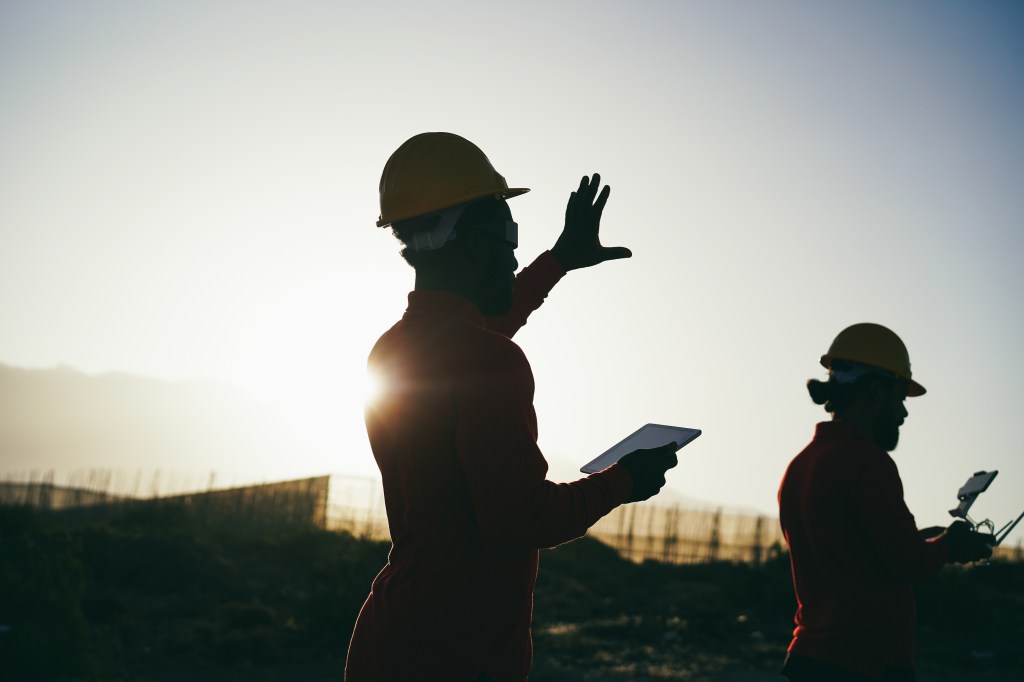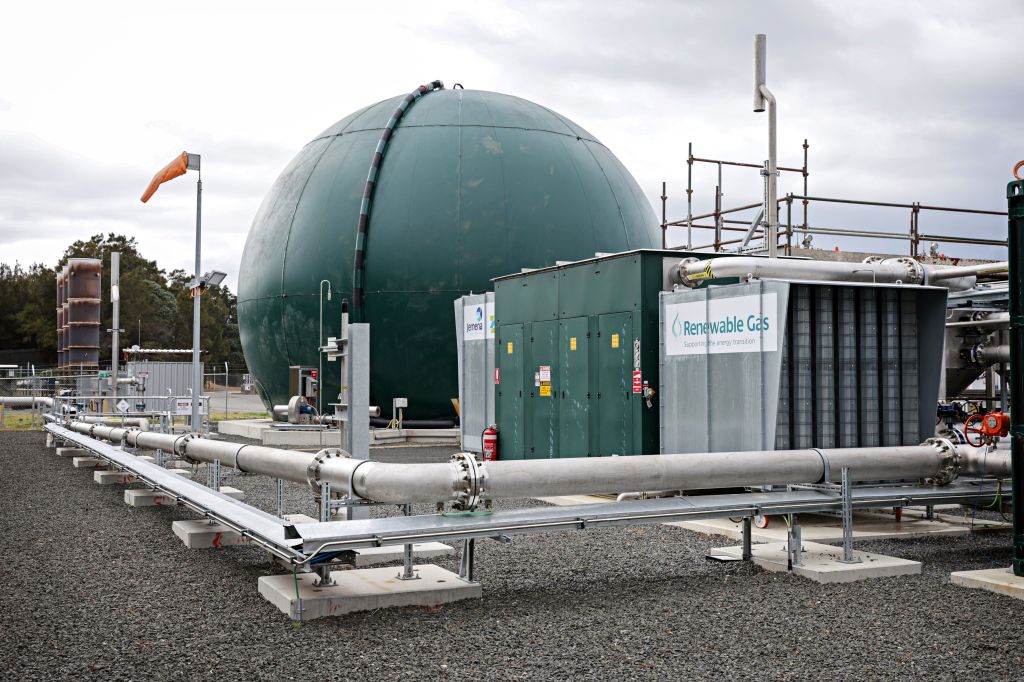Mapping Australia’s energy future: Jemena’s vision for a renewable gas industry
Meet the MD transitioning energy company Jemena to a net zero future and leading the push for a renewable gas industry in Australia.
BRANDVOICE – SPECIAL FEATURE

Early morning swims in the waters around Melbourne’s Mornington Peninsula or even at the local swimming pool are David Gillespie’s preferred thinking time.
“It’s one of the few places in the world where no one can call me, text me, or email me. It’s a sort of sanctuary where my brain goes anywhere and everywhere across different things,” he says.
As the MD of $12.4 billion electricity and gas distributor Jemena, Gillespie has plenty to think about. He’s tasked with leading the energy company during a pivotal time when the world is transitioning to net zero and rethinking the future of energy as we know it.
“This whole energy sector is ripe for the biggest change that we’ve seen, or will see, for many, many years,” says Gillespie. “If you think about a system that’s probably been built over 150 years, we’re going to change more components of that system, the energy system, in the next 15 years than we did in the previous hundred.”
Jemena owns and manages some of Australia’s most significant gas and electricity assets, supplying millions of households and businesses with these essential services every day.
So, what does the future of an energy company like Jemena look like in a world where a growing coalition of countries, including Australia, are attempting to transition to net zero emissions by 2050?
“We are approaching the energy transition with a view that it will require many solutions, not one,” Gillespie says. “We shouldn’t be trying to pick winners from a technology perspective. We’re going to need them all.”
Leading on renewable gas

Amid global calls to phase out fossil fuels, Gillespie says there is a broad consensus that gas is still needed by manufacturers who require combustible fuel to create products such as bricks, steel and concrete.
The focus should be not on eliminating gas but finding ways to reduce the carbon footprint of gas – by embracing renewable sources, he says.
“We’re advocating for renewable gas to be a bigger part of the overall energy mix.”
On the gas side of its business, Jemena operates a 25,000 km gas network delivering gas to more than 1.5 million homes, businesses and industrial customers across Sydney and parts of regional New South Wales. In addition, it builds, owns and operates some of Australia’s most important gas transmission pipelines, including the Northern Gas Pipeline that connects the Northern Territory to Queensland and the Eastern Gas Pipeline, which delivers gas from Victoria to the New South Wales market.
In 2023, Jemena partnered with Sydney Water to launch a trial biomethane plant in the Sydney suburb of Malabar to transform wastewater into renewable gas that produces enough energy to help heat the showers and cook the meals in the equivalent of around 6,000 Sydney homes. The plant is the first project in Australia to produce biomethane and inject it into a gas network. While small in scale for now, it is intended to demonstrate to the industry what can be done to help lower emissions without changing gas infrastructure, appliances and manufacturing operations.
Gillespie estimates that about 34 petajoules of biomethane can be produced from household and agricultural waste in the Sydney basin, about a third of the current gas used in the area or half the industrial load.
“This is not new science,” says Gillespie. “This is a circular economy that many other countries around the world are already tapping into and using, particularly in Europe and the US.”
Denmark, for instance, has around 150 biomethane plants, with the primary input being livestock waste. In 2023, the share of biomethane in the Danish gas system reached almost 40 per cent, and by 2030, Danish gas consumption is expected to be 100 per cent green, according to the Danish Energy Agency.

Target required
Heading inland to the suburb of Horsley Park, Jemena’s Western Sydney Hydrogen Hub is demonstrating hydrogen production and power generation, as well as testing how hydrogen can be injected into the existing New South Wales gas network, currently at blends of around 2%.
Gillespie says manufacturing and heavy industry may eventually shift to hydrogen, but until it is widely available and affordable, biomethane is an effective ’here and now’ technology already being used successfully overseas.
Research commissioned by the Australian Pipelines Gas Association and Energy Networks Australia found that the most economically efficient pathway to net zero emissions for today’s gas users involves a mix of renewable gas and renewable electricity.
Theoretical cost modelling shows that gas customer emissions can be reduced to net zero over the period 2025 to 2050 by switching to a mix of two-thirds renewable gas and one-third renewable electricity.
In May, the Australian Government released its Future Gas Strategy, which states that gas will play an important role in the transition to net zero.
“The opportunity set is so vast that if we can get it right, there’s going to be a bright future for our business and the whole country generally.”
David Gillespie,
MD, Jemena
Jemena is calling for a nationwide Renewable Gas Target, which Gillespie says is required to send a strong message to investors to channel more capital into renewable gas projects, including biomethane and hydrogen—similar to the response to the Renewable Energy Target, which continues to support the investment and development of renewable electricity generation.
He also wants to see companies be able to apply any reduction in emissions from switching to biomethane from natural gas in their national greenhouse gas reporting.
The gas network also has the potential to act as a giant battery, storing energy in underground pipes for use when the wind isn’t blowing, and the sun isn’t shining or during high demand, he says. Gillespie estimates the storage potential of existing East Coast gas transportation and distribution infrastructure is over 27,000 GWh – about 70 times the amount of storage of the Snowy Hydro 2.0.
Toward net zero
In 2021, Jemena announced an ambition to achieve net zero emissions by 2050 for scope one and two emissions and to reduce scope three emissions through its renewable energy projects.
The same year, Jemena, which has a large public bond program with close to $4 billion worth of bonds on issue around the globe, developed a Green Financing Framework to demonstrate that it’s investing in line with UN Sustainability Goals.
It has raised around $800 million under the Framework to help fund its investments in projects that increase the share of renewable energy in its networks, boost energy efficiency, increase clean transportation, or support climate change adaptation.
The prospect of being at the leading edge of a significant transformation across the energy sector is the stuff that gets Gillespie out of bed in the morning.
He says that getting it right can reduce Australia’s carbon footprint and transform and reinvigorate the country’s export sector.
“The energy system is so fundamental to the overall economy that if we can make good investments that help us down the energy transition pathway, it will be a real country differentiator.”
Learn more about renewable gas at Jemena’s information hub: at partofthebigpicture.com.au